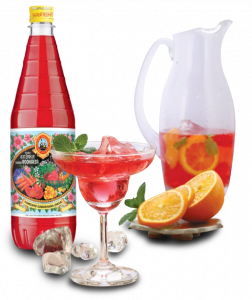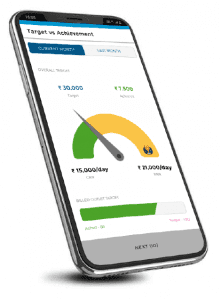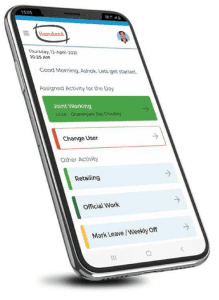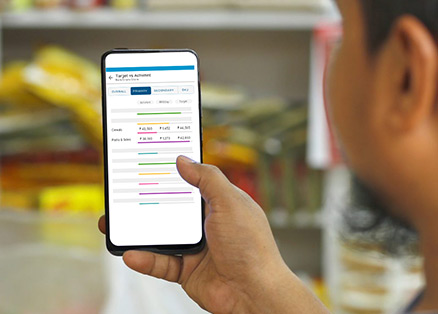Menu
Close
Raise your hand if you’ve grown up seeing pink-coloured swirls of
RoohAfza syrup on top of a cold glass of lassi or having a chilled glass of Hamdard’s RoohAfza in the summers. This iconic botanical drink has been quenching the thirst of millions of customers for over 100 years, helping them combat fatigue and loss of energy, and feel refreshed.
Mansoor Ali, Chief Sales & Marketing Officer for Hamdard Laboratories India (Food Division) had been watching the healthy foods and beverages space hot up in the last 6-7 years. He realized that the only way forward was to have a diversified product portfolio to cement the brand’s reach across the country. But he knew it was impossible to do so without an agile technology partner who could lay the foundation of a future-ready, automated sales ecosystem.
Let’s find out how Mansoor Ali ignited the digital transformation journey of Hamdard Foods to keep themselves one step ahead of the competition, and a hundred steps closer to their customers.

As pioneers amongst Indian companies, Hamdard sees tremendous value in investing in research & development (R&D). Their early investments in R&D, enabled them to become a key differentiator and develop a basket of robust products for diverse markets across the world. Hamdard constantly undertakes pharmacological studies on herbs to revive, test and make old formulations more effective.
With three manufacturing units located in India at Manesar (Haryana), Ghaziabad (Uttar Pradesh) and Okhla (Delhi); Hamdard has one of the largest Unani, ISO 9001-2008, HACCP and GMP certified facilities in the world. RoohAfza manufacturing unit at Manesar Haryana has successfully been audited for compliance by USFDA. Hamdard markets its products across India with a 300 strong sales team and a network that covers over 5,00,000 outlets.

When it was originally launched in the pre-partition era, RoohAfza was marketed as a medicine because of its cooling properties. Over the years, it built a cult-like following in India and many other countries as the go-to summer drink. To build bridges with the younger, convenience-seeking consumers, Hamdard strategically forayed into the Ready-to-Drink segment, expanding the flagship brand’s offering into new variants like Coconut water, Roohafza sugar free lite, Rooh Afza Milk Shake, Roof Afza Fusion, Rooh Afza Lassi, Rooh Afza sachet (single serving pack).

Launching innovative products was not such a big challenge for Mansoor’s team. But what good are new products without a strong distribution strategy?
The first expected impact of the FieldAssist platform was that attendance became 100% automated. Not only did Mansoor get real-time visibility on how many people were in the field at any given point, he could also identify hi-potentials and low-performers.
For market research and gathering intelligence from the field for any new product launch, Hamdard used the Survey feature extensively. For example, in the case of honey, whenever a user visited an outlet, he captured whether the outlet stocks honey or notno, how much shelf space is given to it, what is the potential in that outlet or area, and who is the competition, who has the biggest shelf space and why. Hamdard ensured that the sales team had access to presentations, training materials, USPs etc on the FieldAssist app itself to improve new product sales.
When the products got launched, the consolidated data helped them monitor how much was produced, how much was dispatched, what were the returns/damages etc, and get tighter control on their logistics.


The challenge with most of the new Hamdard products was that they had a short shelf life and required refrigeration. Therefore, Mansoor required very detailed, drilled-down data to ensure they had the right assortment mix. With FieldAssist, his mid-managers were able to get very specific data on which SKUs were moving in which outlet, and hence identify the products which needed special focus.
For example, if 3 products were defined as Must-Sell, capturing retailer stock on these items was made mandatory, and if the stock wasn’t there then the SO had to take an order for those items, or document the reason for a non-order, without which he was not allowed to visit the next outlet.
When this process started getting adhered to, Mansoor and his sales leaders started seeing the reason why orders were or were not coming in. They were all pleasantly surprised with the success of this campaign since none of them expected it to do this well!
As all sales flows got digitized and automated, suddenly the metrics started rising. Employee Performance was at an all-time high, Mansoor was able to see real-time numbers on his dashboard on things like:
a. Employee coverage
b. Outlet coverage efficiency
c. Dispatch against Order – Secondary order validation

When the pandemic hit, Mansoor remained unfazed, because his team had the telephonic-order feature in the palm of their hands. With it, they were able to offer uninterrupted service to their retailer network without needing to visit the outlets. The frontline salespeople called the retailers directly to take their orders and via WhatAapp, shared the orders with the respective distributors.

From established industry leaders to young startups, 600+ brands believe in us.

© Copyright 2024 Flick2Know Technologies Pvt. Ltd.